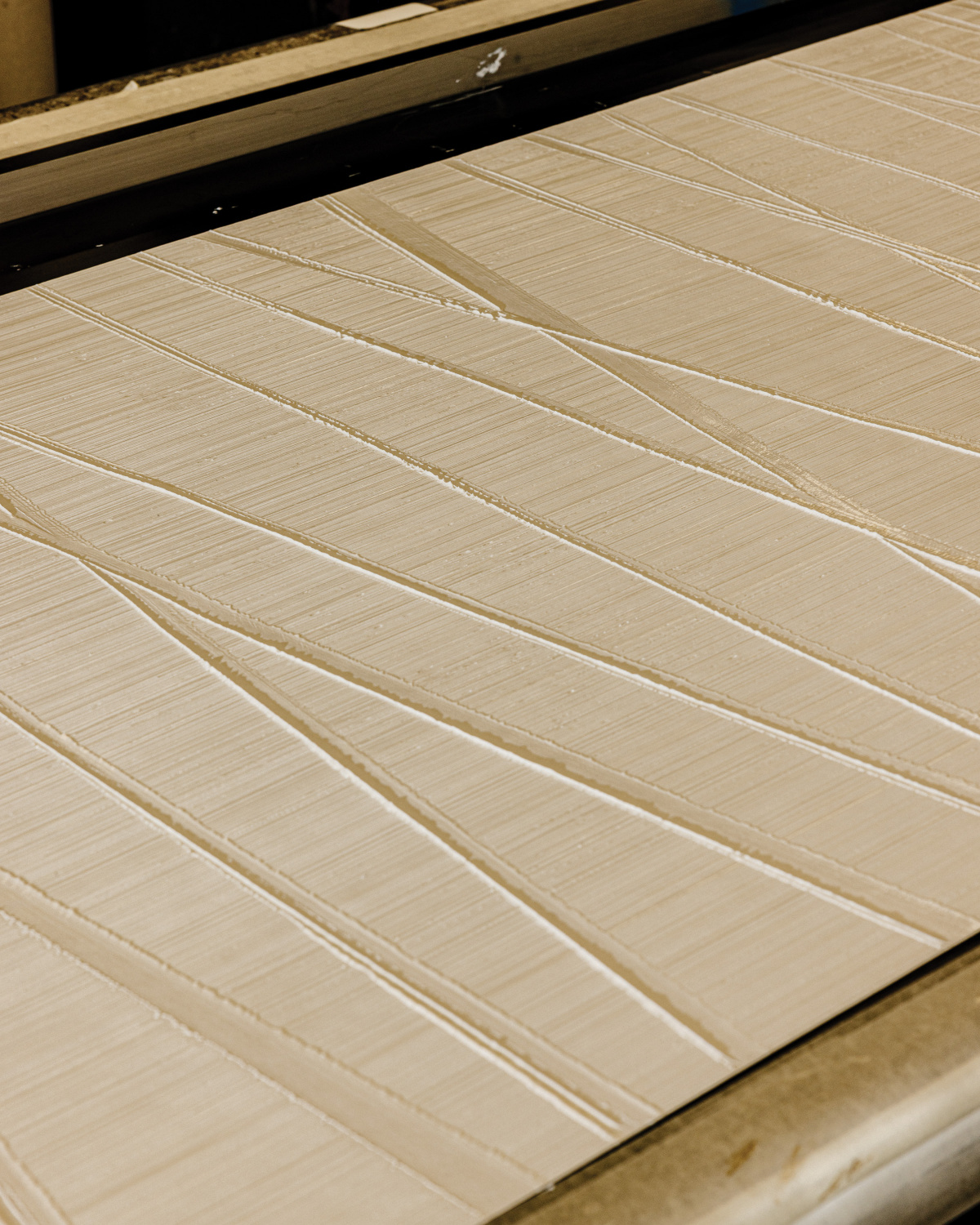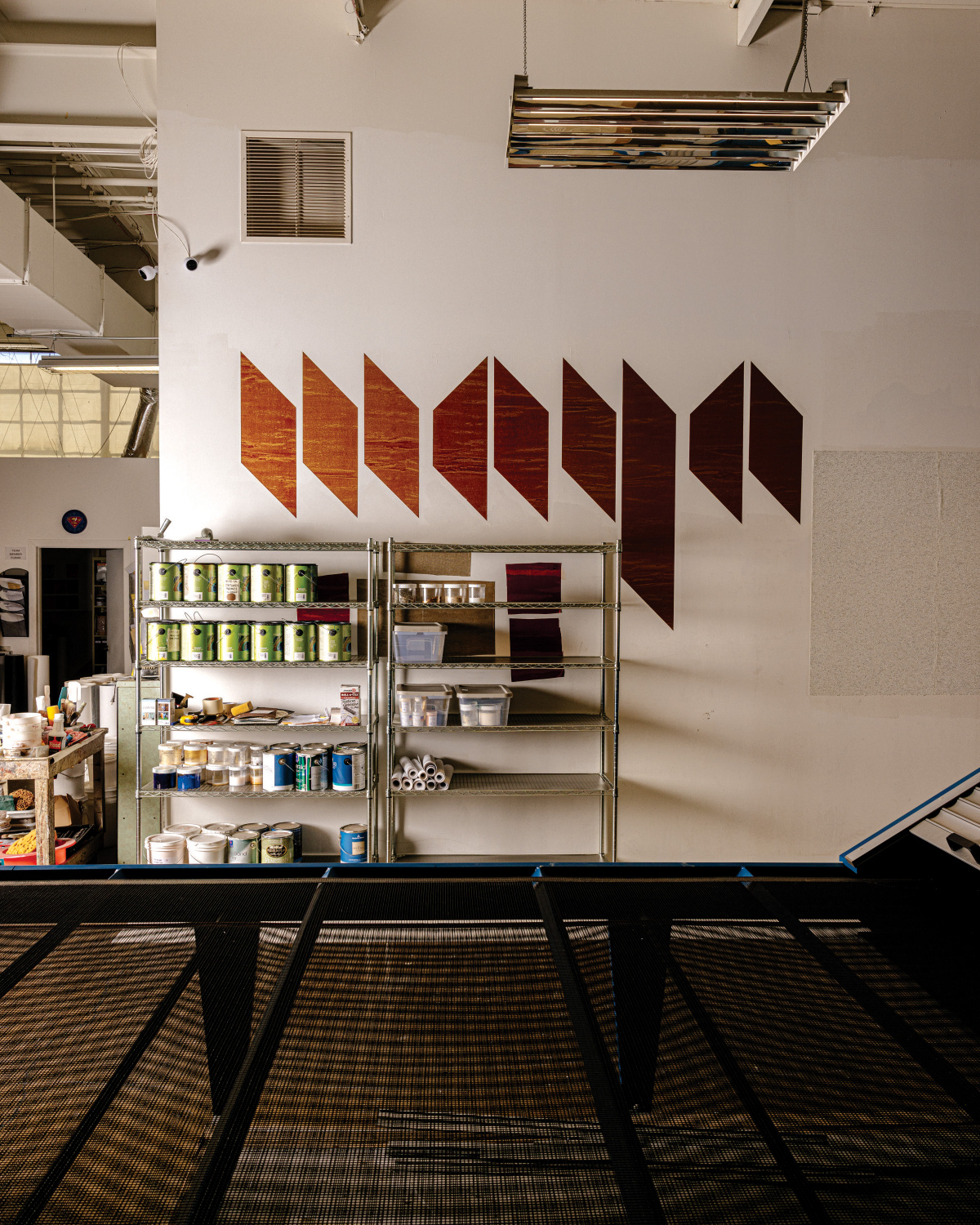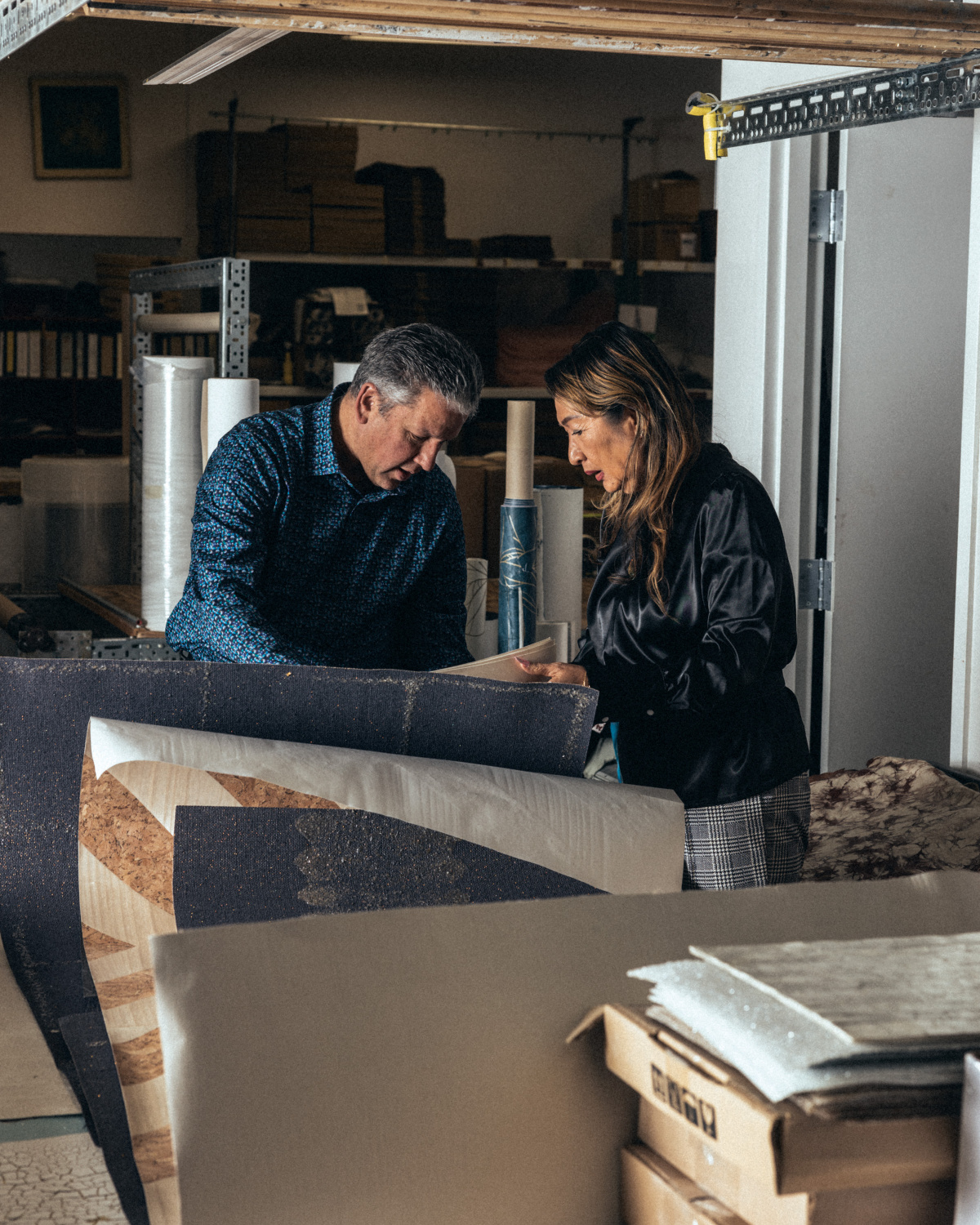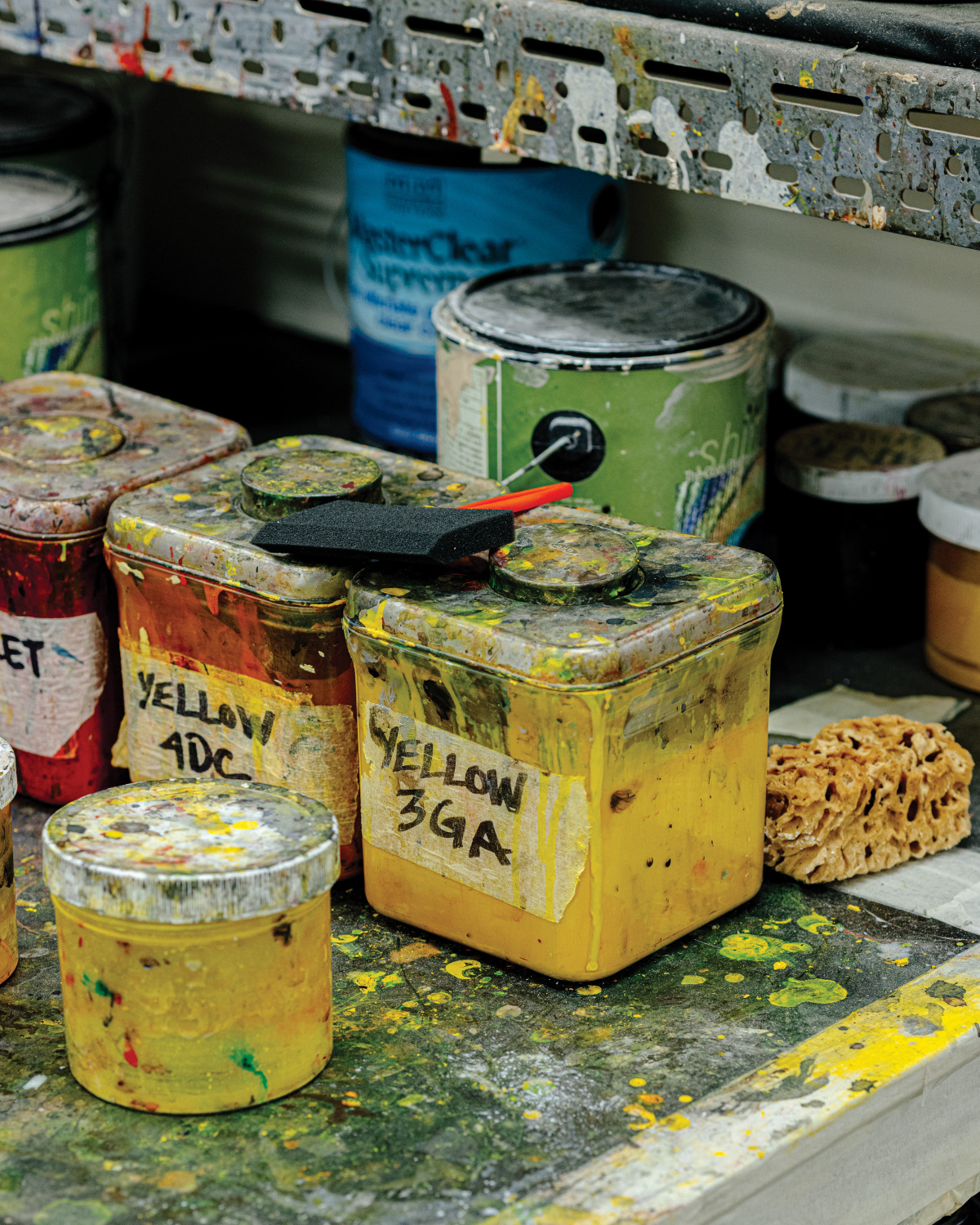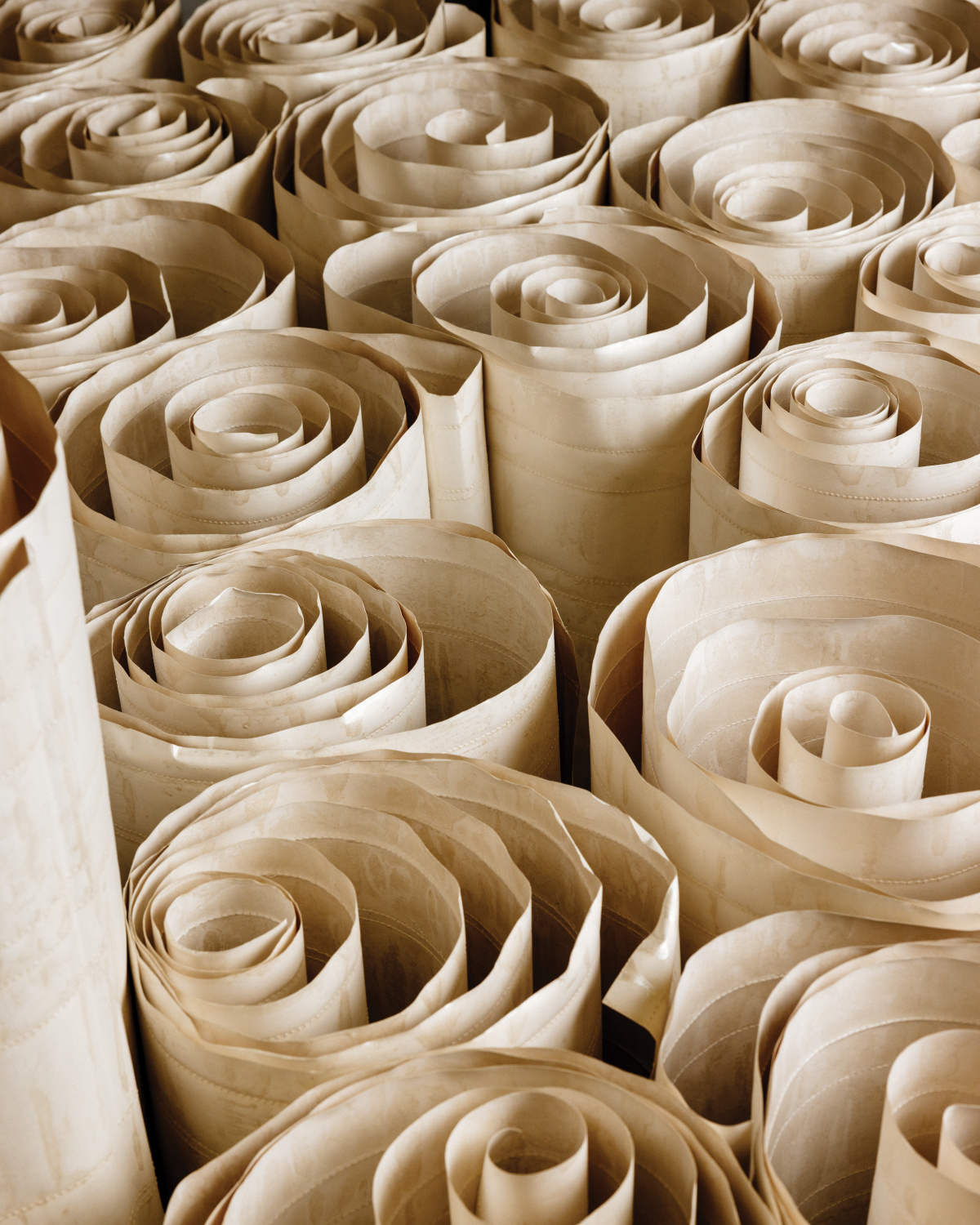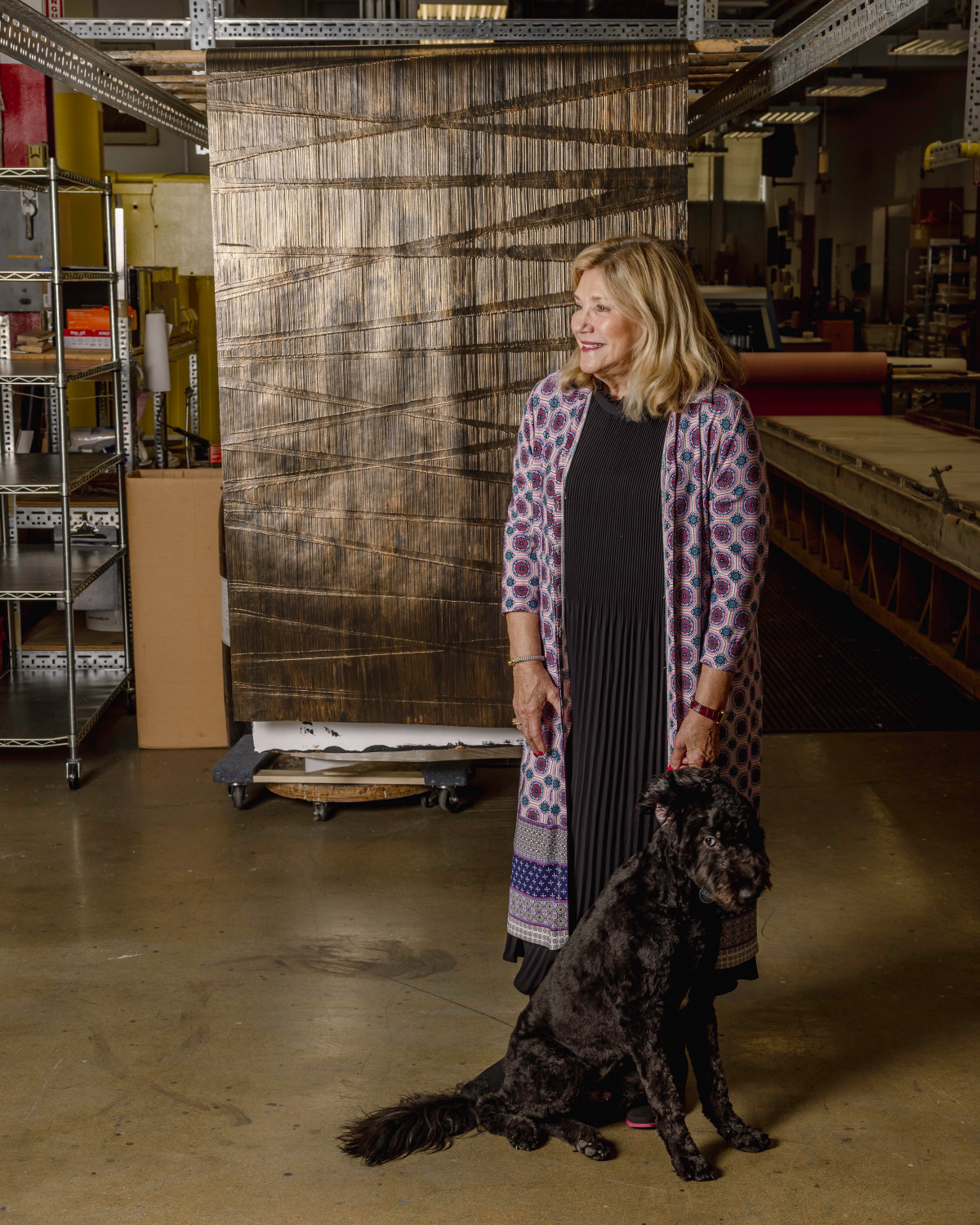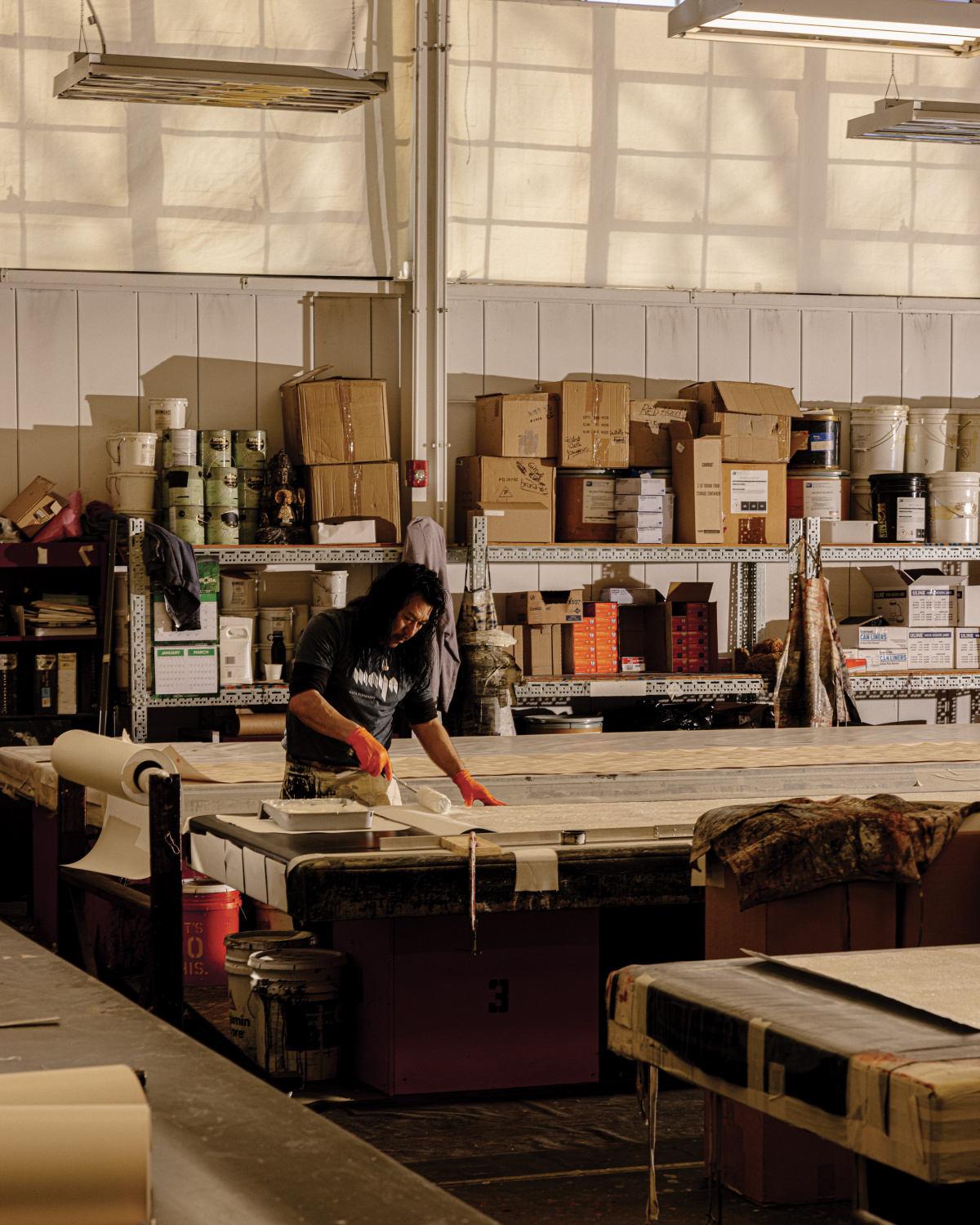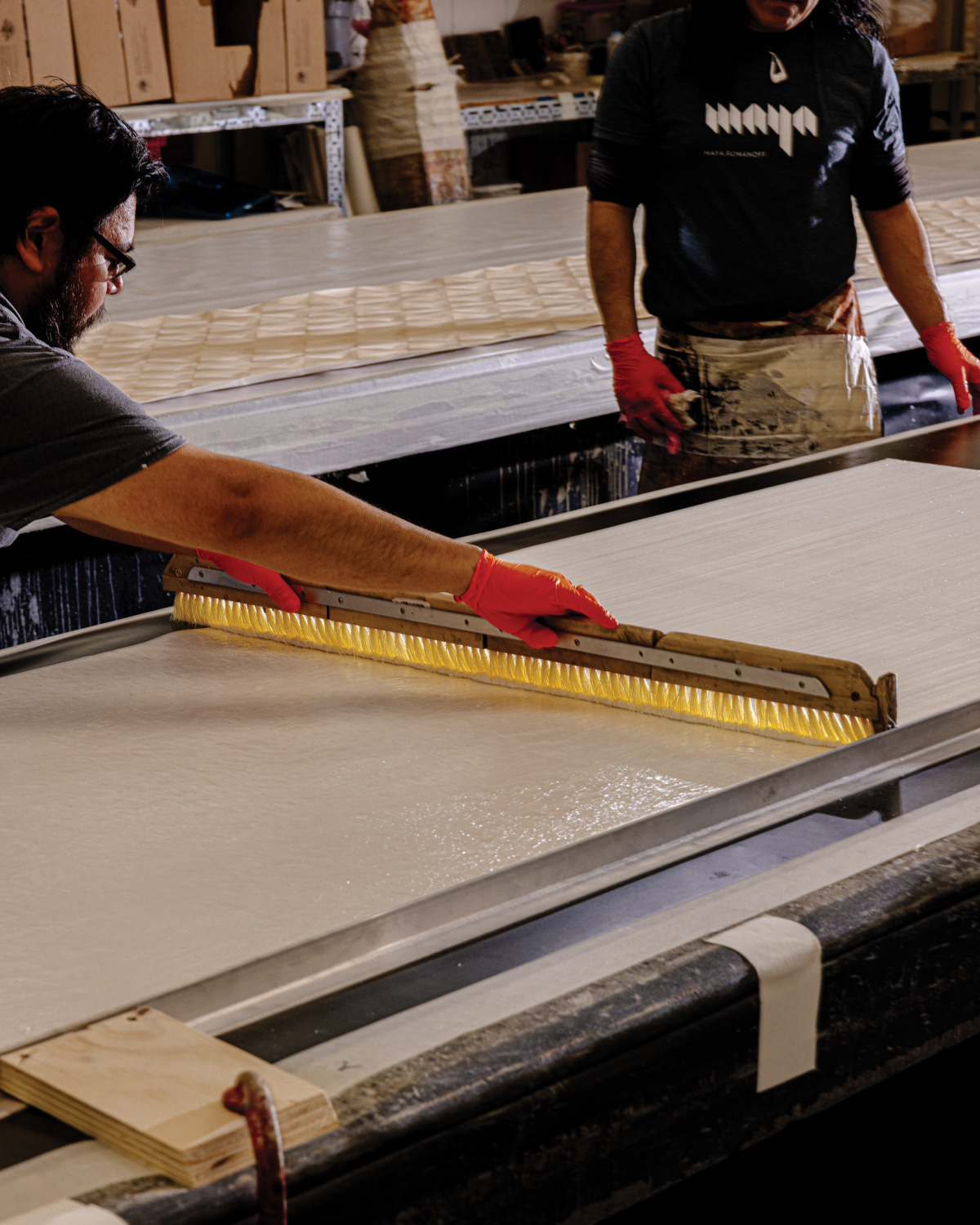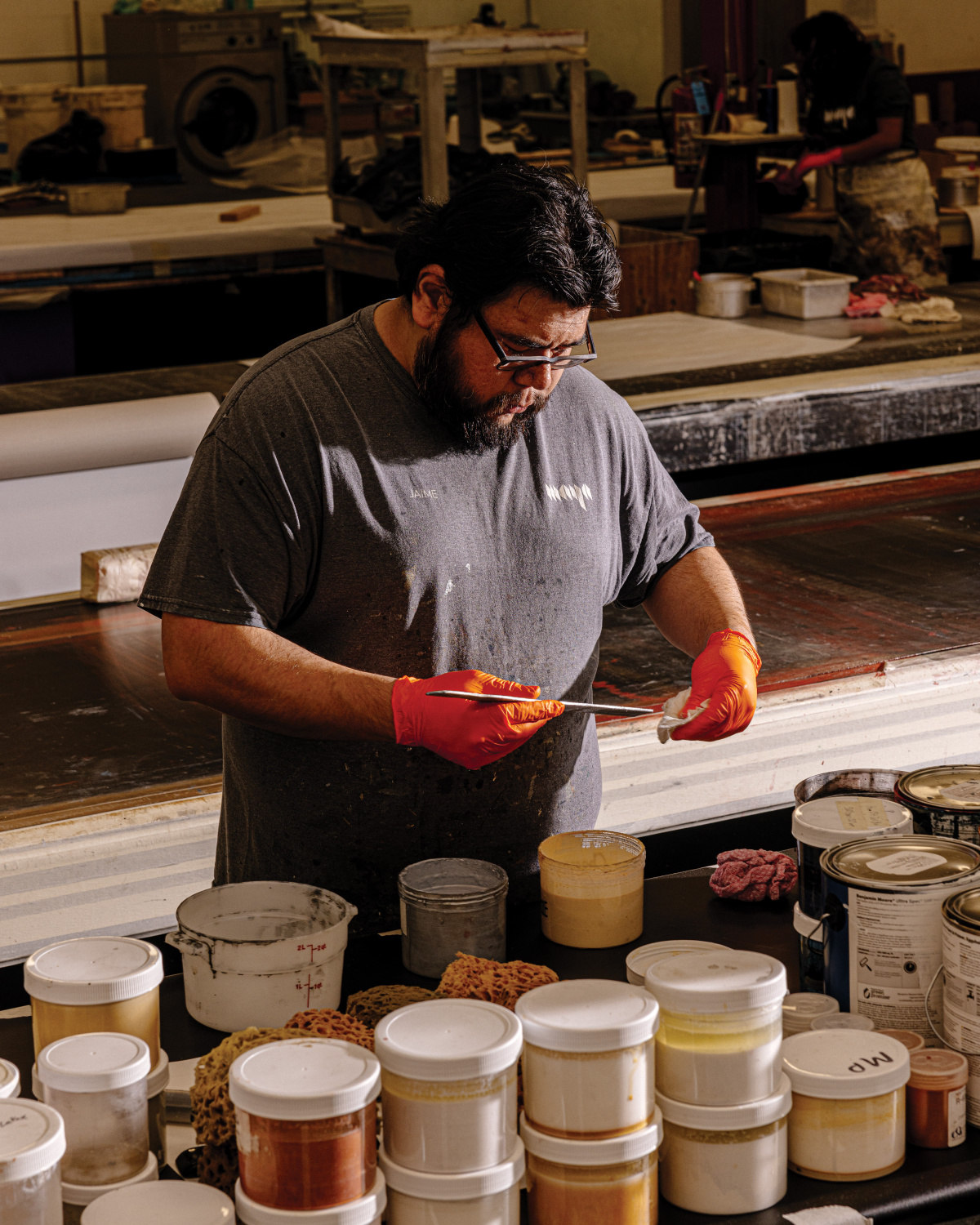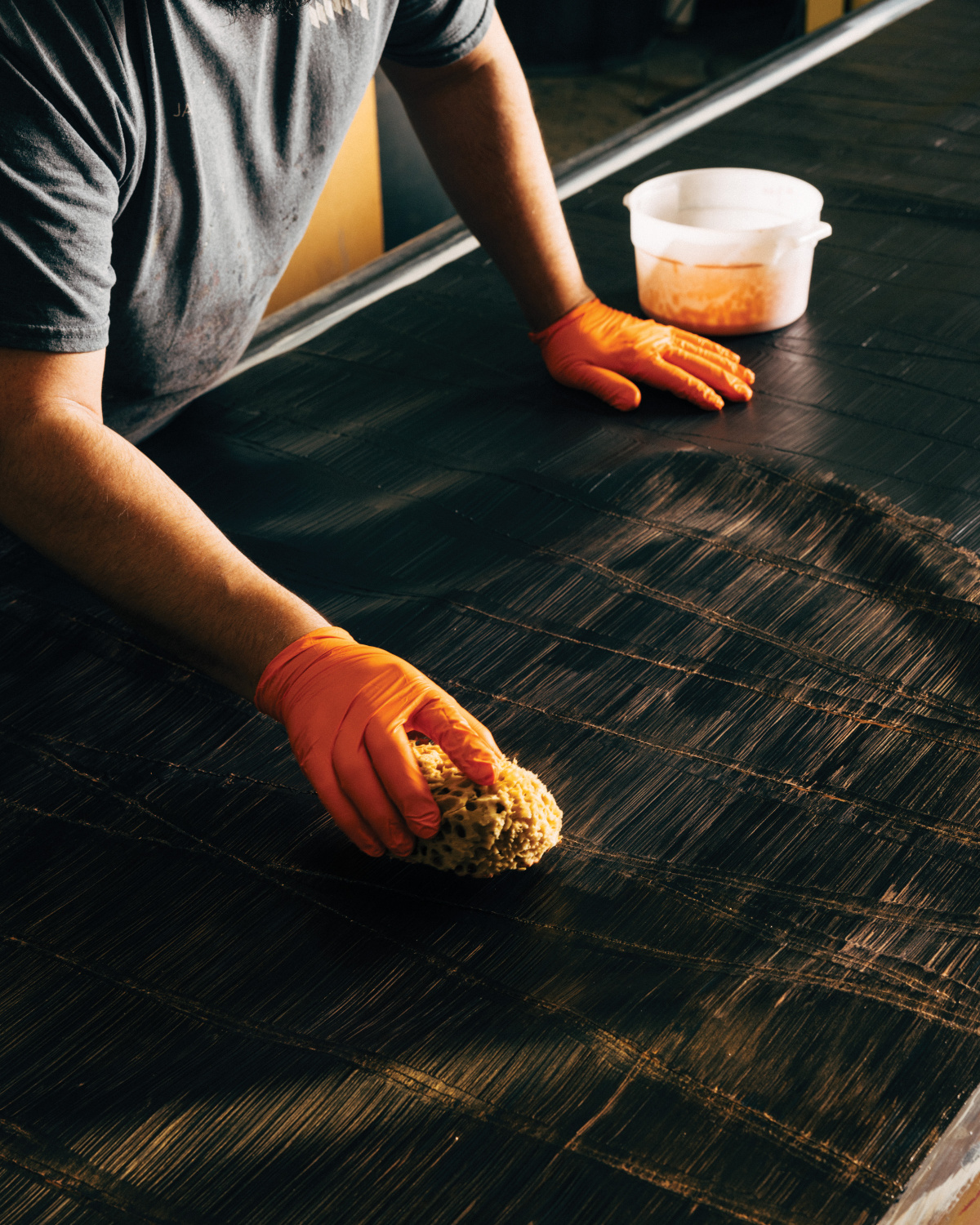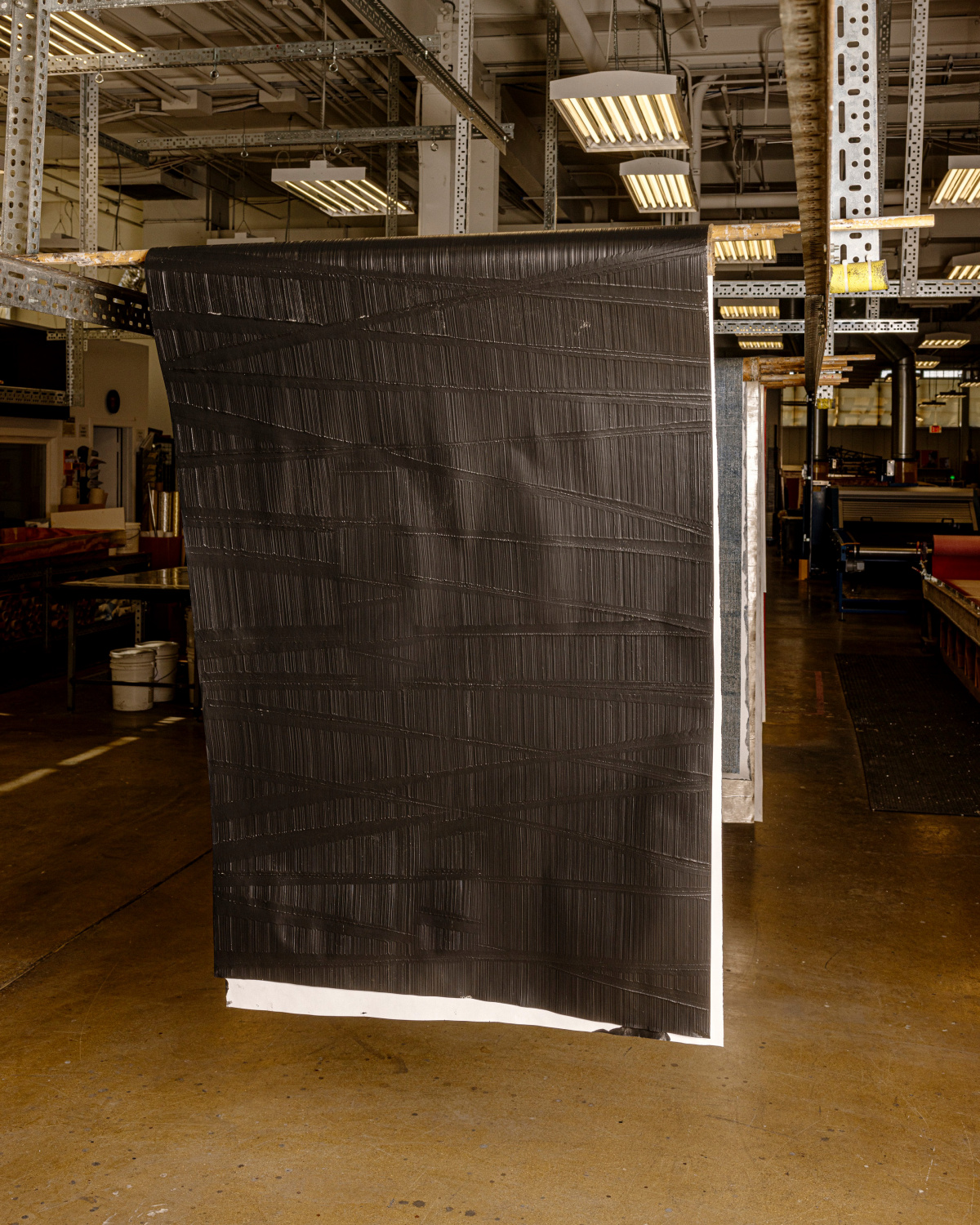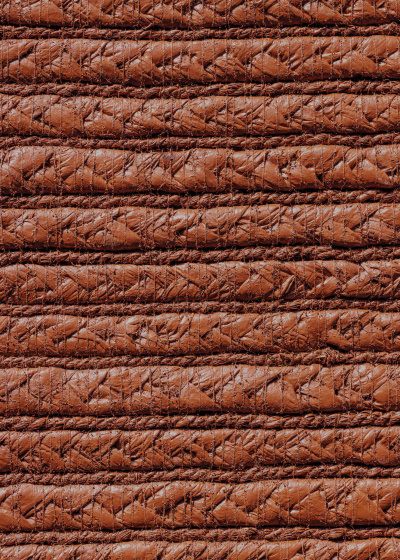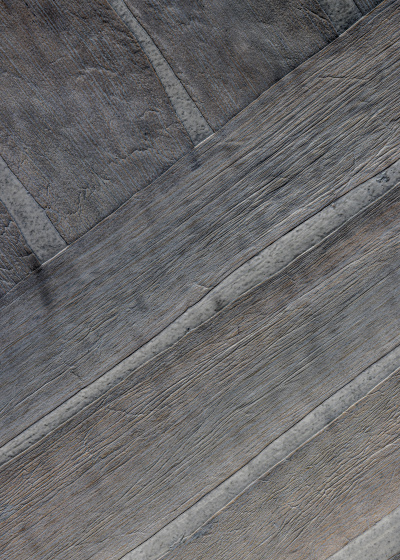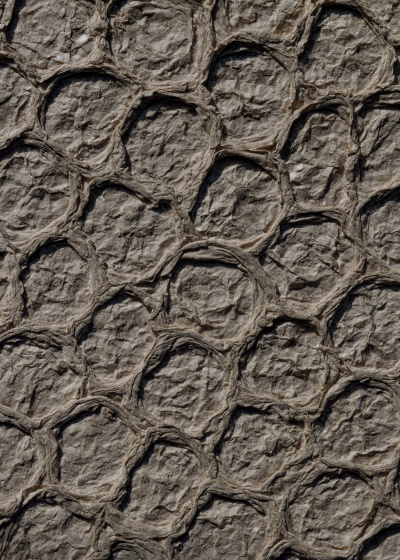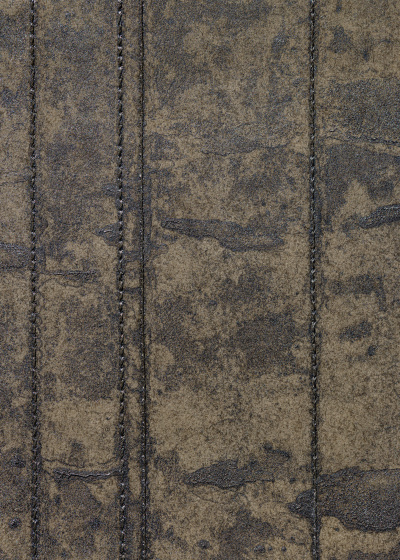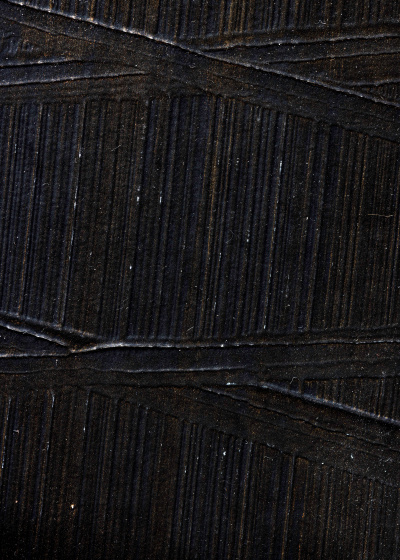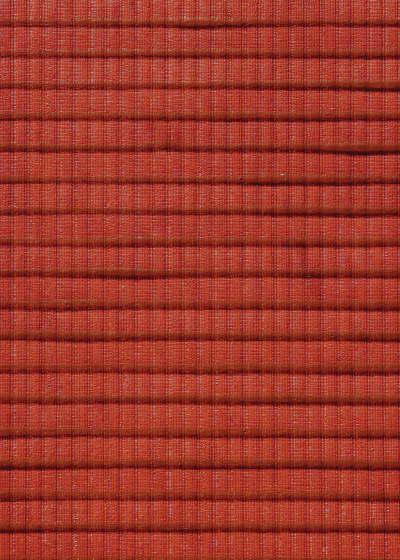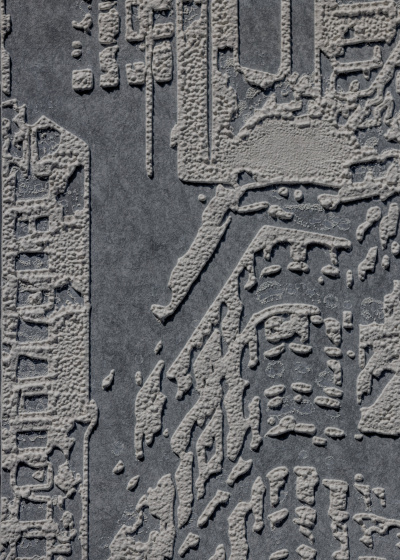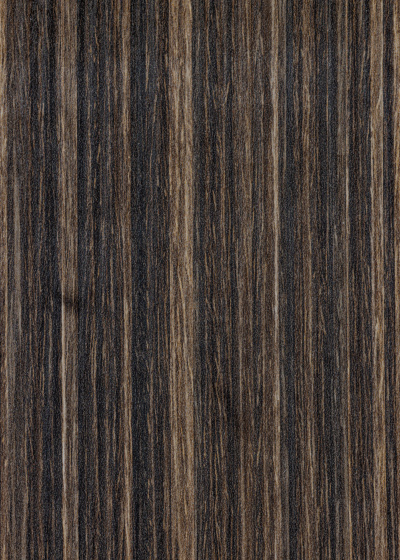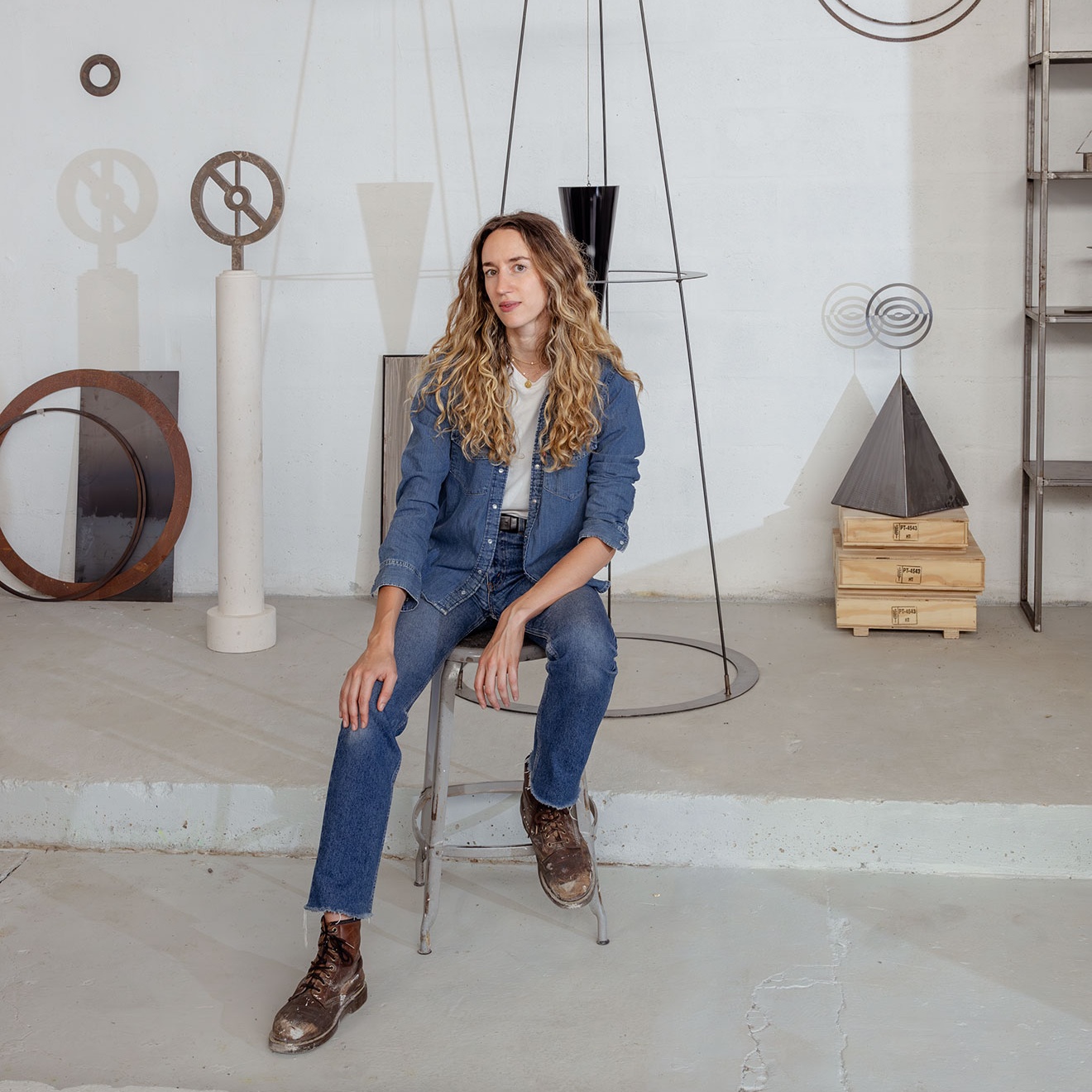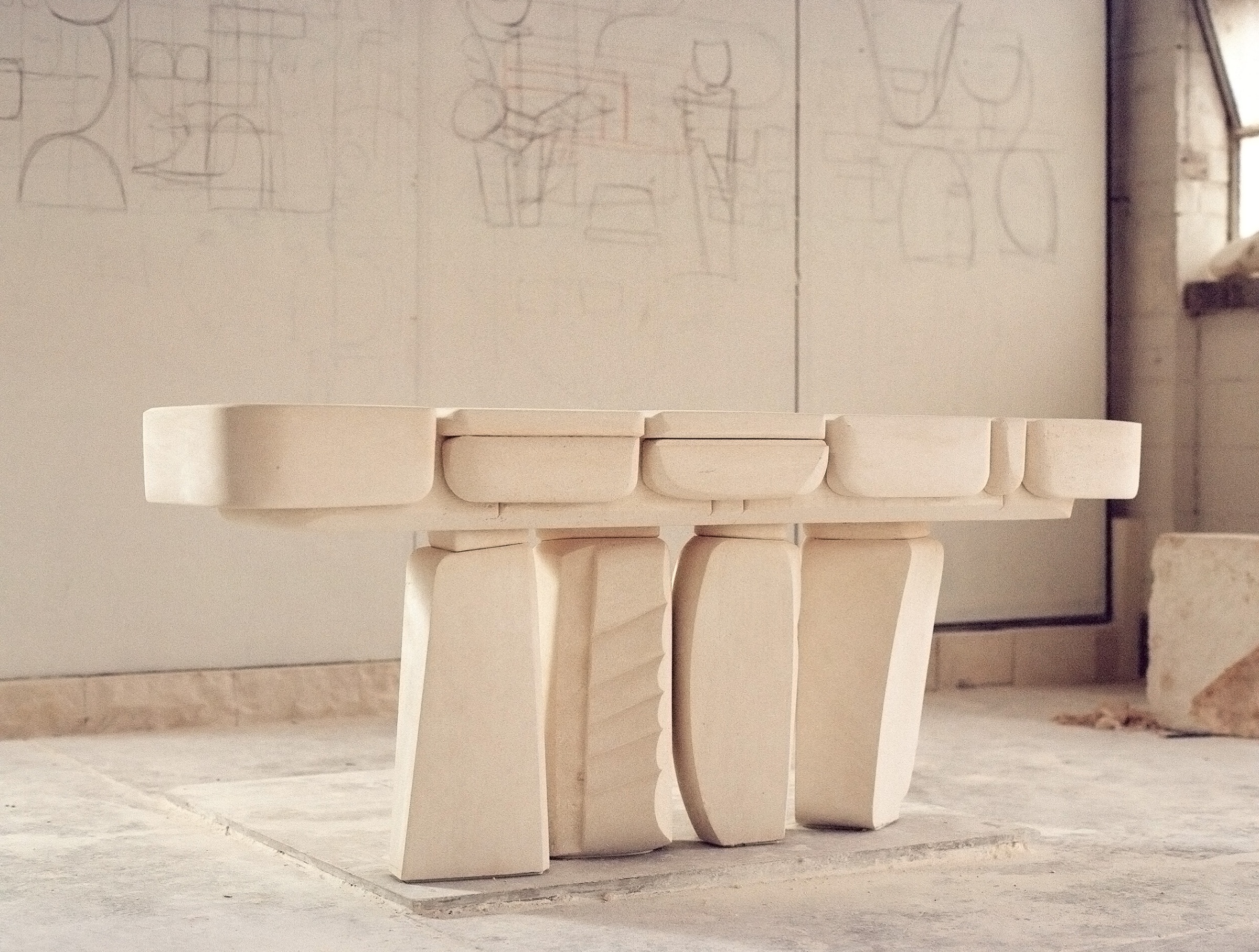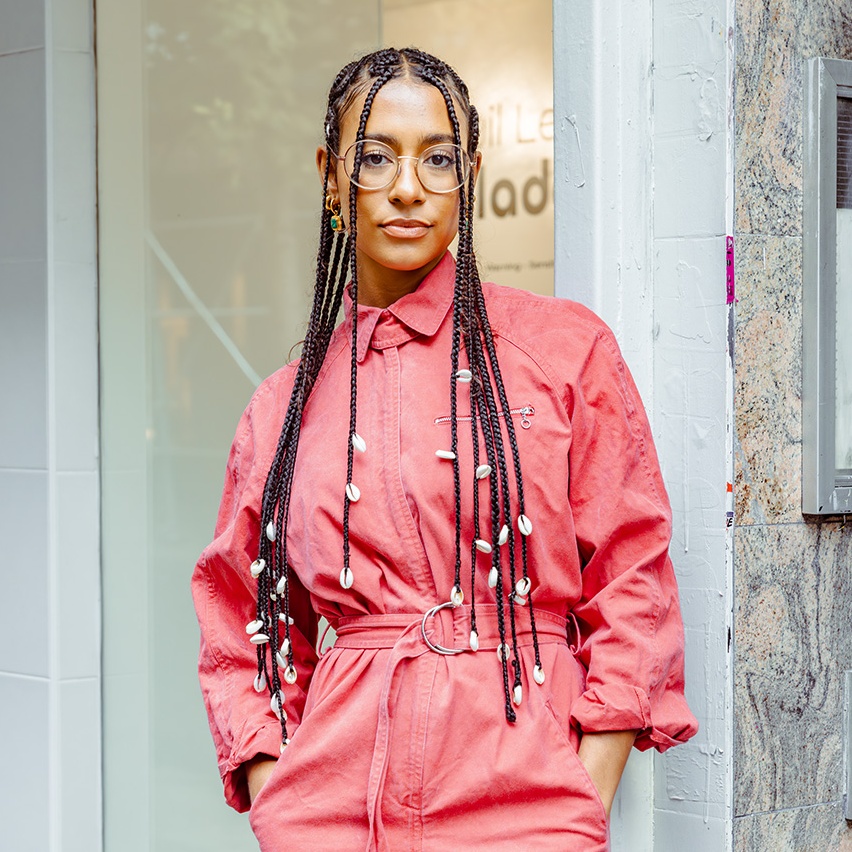“Handmade” and “mass production” rarely go hand-in-hand. Handcraft evokes quiet images of soft fingertips and scrutinizing detail. Mass production sounds like a factory, full of metal and clanging. Yet Maya Romanoff—a family-run company and the largest US manufacturer of handmade wallcoverings—proves it is possible to produce artistic and responsible products at relatively large scale almost entirely by hand. Behind unassuming brick walls in the Chicago suburbs artisans screenprint, flock, paint, die-cut, and stitch designs so beautiful that three of them are literally hanging in the Louvre.
Executive Vice President David Berkowitz compares the Maya Romanoff studio to Willy Wonka’s chocolate factory.
“We can do almost anything. Combining all these different disciplines together makes you feel like a kid in a candy shop,” David says. As visitors see artists at work, tools, machinery, and a vast array of materials, they feel the care that goes into the art of handcraft.
“You walk in the building and immediately feel something special happening. Everybody who works here has a passion for design, for beauty, for what we’re doing, and for handcraft,” says Letta Cook, director of product development.
- “Sometimes our tools are elaborate pieces of machinery and sometimes it’s as simple as a piece of conduit. It’s really a testament to the idea that you find beauty everywhere,” says Letta Cook, director of product development. Above, the crisscrosses of the Conduit collection are on display.
- As a Zen Buddhist practitioner, Maya knew the impact of a well-designed space on a person’s consciousness and mood.
It all started with Maya Romanoff, company founder and namesake, selling peaches and chocolate cake out of his Volkswagen van at Woodstock. He fell in love with tie-dye as couture, beyond a hippie fashion statement, and founded his company in 1969 as a fashion label. His designs could be spotted on Elton John and The Who before shifting to fine art installations, walls, rugs, and furniture.
As a Zen Buddhist practitioner, Maya knew the impact of a well-designed space on a person’s consciousness and mood. His son and fellow Zen Buddhist, current president Michael Gutwaks, says that the gratification of enhancing people’s lives through their spaces was a big motivator for Maya. His friend, legendary textile designer Jack Lenor Larsen, encouraged Maya to develop a product line, so he did—beginning with a tie-dye wallpaper.
- The majority of the Maya Romanoff products are made in the US, right in their studio. David Berkowitz, executive vice president, and Nabopha LY Om, aka “Bo,” creative director, (top left), lead the product development team, utilizing anything and everything in their workspace to make unique designs.
- CEO and Maya’s wife Joyce Romanoff says that over 55 years of production, only 1% has ever been returned. “I’m very proud of the respect we’ve garnered through the years, and the fact that people come to us because they know the quality, the beauty, and our personalities,” she says.
“The tie-dye paper is my all-time favorite product. Maya was genius enough to take something as uncontrollable as tie-dying ink onto a substrate where it essentially just bleeds out, and he made it into something that’s cohesive from panel to panel,” Letta says. Its success is all about the craft. “We are literally just folding that paper by hand and hand-dying it. The hand is the simplest but strongest tool we have.”
The Maya Romanoff line has expanded through the years and can be spotted in the world’s most luxurious residential, commercial, and hospitality spaces, including seven-star hotels in Dubai and the homes of sheiks. The company eagerly takes on full-scale custom wallcoverings, working with designers and clients to create anything they can imagine.
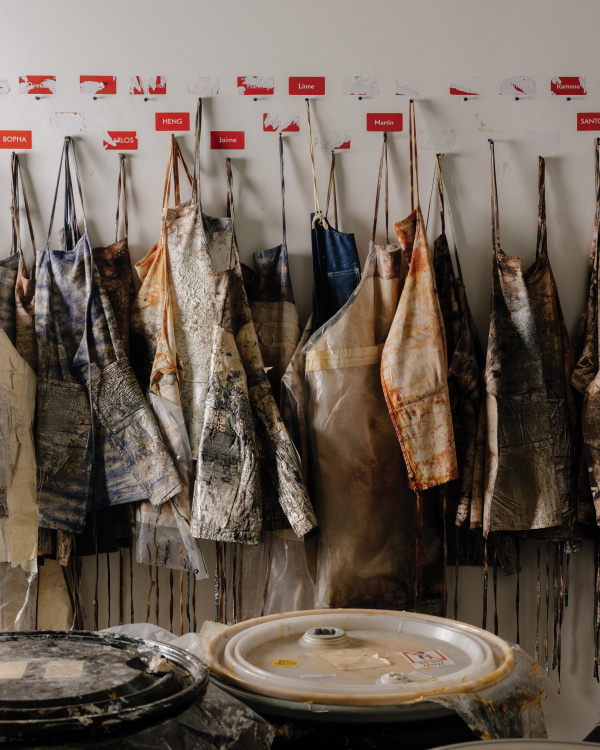
Artists’ aprons hang in the studio. “Maya had a philosophy to walk gently on the earth and take from it only what you need to create something beautiful. That spirit and intention is something that I make sure is carried on in everything we do,” David says.
A recent addition to the line in 2023, Conduit, stems from Maya’s spirit of experimentation and play. When a client specified a custom wallcovering, Studio Creative Director Nabopha LY Om, known as Bo, began to play with raked compound and linear impressions. She was aiming for a vertical variation on Weathered Walls, one of Maya’s core designs with a horizontal watermark effect similar to clouds, but she just wasn’t finding the right way to create the textural depth.
That is, until she stumbled upon a piece of metal conduit piping in the studio. “When I start an idea I try to use any tool around the facility to create the design. I finally found this conduit that’s hanging around and said, ‘Let me try this and see how it works,’” Bo says. It worked and inspired a new product line.
This happens often at Maya Romanoff: A client makes a request, the team finds a way to make it just right—and then they keep playing with it. When something sticks out as beautiful and interesting, Bo experiments and expands upon it to bring a new design into the MAYA line.
- The production duo brings out the conduit pipe for a series of press-and-wiggle stamps across the compound, creating a light crisscross pattern.
- “I am open to everything, because anything that I see or I feel like, I can try and see how it looks,” Bo says. Top right, a specially made comb rakes the vertical striations into Conduit.
The Conduit Collection is made entirely by hand, beginning with a Forest Stewardship Council–certified, non-woven paper. A team of two artists applies a proprietary compound, which they rake vertically down the paper with a 36-inch comb specially made to the width of the paper. The production duo then brings out the conduit pipe for a series of press-and-wiggle stamps across the compound, creating a light crisscross pattern. After the compound is dry the paper gets a base coat of water-based color, followed by hand-applied (or more accurately sponge-applied) metallic tipping.
“It is interesting because it has a depth of vertical pattern, and then the horizontal impressions create the lift,” Bo says. The collection exemplifies Maya’s philosophy of layering texture and color to create luxurious, artful walls.
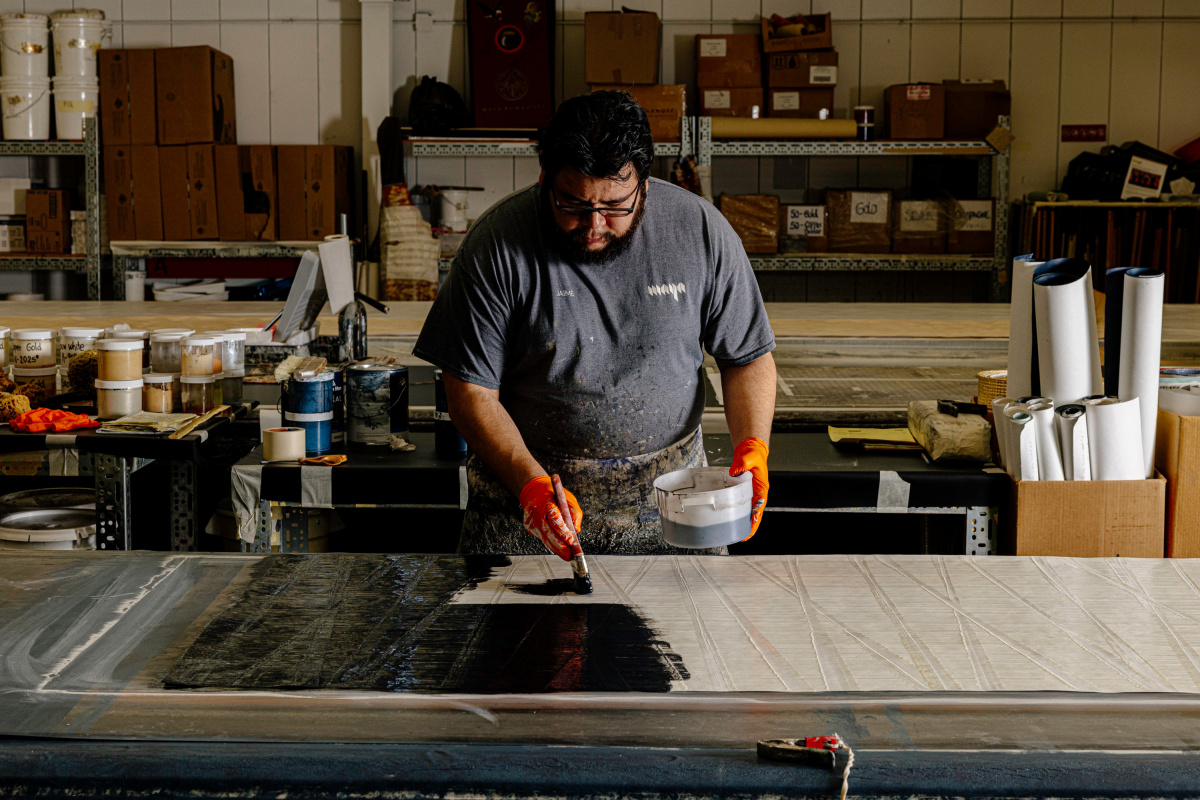
“At first I mixed the metallic into the color itself. Now we have changed to the faster way: we spray the color, and then we do a little metallic accent on top,” Bo says. Pictured, the base color being applied.
The entire production process, invented by Bo, is explained to the production team in detail so they can repeat it the same way every time. This way even as the conduit lines vary in placement they will look balanced on the wall together.
After all, each detail took time and nearly endless sampling to perfect. “It’s a very simplistic tool creating a very sophisticated design. We spent months trying to figure out the pattern repeat,” David says. Plus, they had to test and select shades for the collection’s nine colorways, and for the metallic touch. “There’s a bit of discovery that goes along with it, and it takes time.”
The final step, for Conduit and for every other paper, is inspection. The team scours every yard of product to be sure there are no defects and marks the panels for install.
The step ensures quality control, and it works. CEO and Maya’s wife Joyce Romanoff says that over 55 years of production, only 1% has ever been returned. “I’m very proud of the respect we’ve garnered through the years, and the fact that people come to us because they know the quality, the beauty, and our personalities,” she says.
- The Conduit Collection is made entirely by hand, beginning with a Forest Stewardship Council–certified, non-woven paper.
- A freshly created sheet of Conduit hangs to dry before being inspected and meticulously stored.
Joyce also emphasizes that the people holding the brushes are the root of the Maya Romanoff culture. Many of the artisans have been with the company for the majority of their careers. Just take Bo, in her 40th year with Maya Romanoff. The studio team consists of about 20 artisans across generations, and many have invited relatives—children, nephews, cousins—to be a part of the crew keeping handcraft alive. “That’s the great thing. It’s family,” says David, who is also Maya and Joyce’s son-in-law.
Maya passed away in 2014, but his presence remains. Bo continues to use and teach Maya’s techniques and recipes. Joyce strives to keep the business growing, giving Maya’s work a larger-than-ever audience. Michael keeps his spirit alive, as a Zen Buddhist practitioner and as a creative force. David maintains Maya’s sustainable ethos and his refusal to say no—a central determination to find the best way to create a specific design or look.
- Braided Hemp
- Water Hyacinth Parquet
- Meditations Ohm
- Stitched Vertical
- Conduit
- Tremolo
- Serigraph CityScape
- Ajiro Fanfare
- Natural Elements
Even as the wallpapers affix to the walls of the homes of sheiks, the core of the company seems to be in awe of each other for their mutual dedication to handcraft.
“Each artist has their own heart and makes products with love, with their talent,” Bo says. “Maya used to be very strict and said, ‘Nobody can walk into our facility because they might steal our ideas.’ But you cannot steal me. You can try to repeat what I did, but you’re not me. Each and every one of us has our own skill.”
Like Letta said, “The hand is the simplest but strongest tool that we have.”
A version of this article originally appeared in Sixtysix Issue 12. Subscribe today

